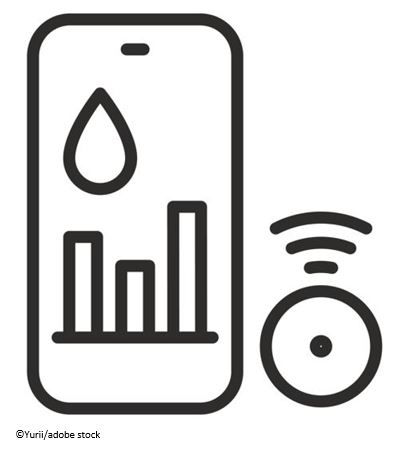Diabetes Caution: FDA Warns of Risk of Missing Critical Alerts from Smartphone-Compatible Diabetes Devices
Hardware or software changes as well as user adjustments may disable or mute alerts for elevated glycemia, medication use, and other diabetes management essentials, the agency said.
The FDA on February 5 issued a safety communication warning people with diabetes about the risk of missing critical safety alerts from continuous glucose monitors, insulin pumps, automated insulin dosing systems, and other diabetes management devices.1

The agency said it has received multiple reports from patients and caregivers of smart phone apps linked to their medical devices failing to deliver critical health alerts or of having not heard an expected alert. Missing such an alert, the agency warned, puts patients at risk for serious events including severe hypoglycemia, diabetic ketoacidosis, and death.1
The warning is relevant to millions of adults with diabetes based on estimates that approximately 30% to 50% of them use this type of app to track glycemic status, medication use, and other aspects of daily diabetes management.2
In the medical device reports, users said they thought they had configured the app to deliver the essential alerts.1 “Modern medical devices, such as diabetes devices that connect to a smartphone, can provide users with the convenience and flexibility to configure alerts that are personalized to them,” Courtney Lias, director of the Office of In Vitro Diagnostic Products in the FDA’s Center for Devices and Radiological Health said in a statement.3 She stressed, however, that users need to monitor these settings regularly to ensure the critical alerts continue to function as expected. “Even if configured correctly, certain hardware or software changes can interrupt the expected operation of these critical devices, which can lead to patient harm if undetected.”3
In its safety communication1 the FDA identified hardware and software changes, updates and configurations that have the potential to interrupt expected transmission of alerts, including:
- Software configuration issues, such as app notification permissions, using “do not disturb,” “focus mode,” or “battery saver mode,” or the app entering “deep sleep” after a period of not being used.
- Connecting new hardware, such as wireless earphones or car audio, that can change default volume of alerts or prevent delivery of alerts.
- Operating system (OS) updates that are not supported by the medical device app.
The agency also included recommendations for diabetes app users, their caregivers, and health care professionals:
- Follow the manufacturer’s instructions when installing, setting up, or updating diabetes device apps.
- Disable automatic OS updates and verify app compatibility with the new OS version before updating.
- Check smartphone alert settings at least once a month, including volume, vibration, and notifications.
- If alerts are missing or inaudible, contact your device’s technical support.
- Report any diabetes device issues to the FDA.
The FDA is working with diabetes-related medical device manufacturers to ensure that smartphone alert configurations of their devices are carefully evaluated before use by patients. The agency is also focused on safeguards that ensure continuous testing of settings in smartphones and mobile medical apps that may impact safety alerts and on manufacturers communicating quickly and clearly with users when updates are made to recommended configurations.1
Clinicians can alert patients with diabetes who use monitoring devices that are smartphone-compatible to report any problems they may have using the MedWatch Voluntary Reporting Form.
Questions can also be referred to the CDRH Division of Industry and Consumer Education.